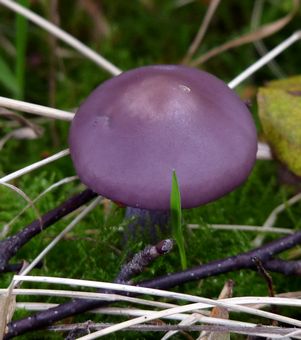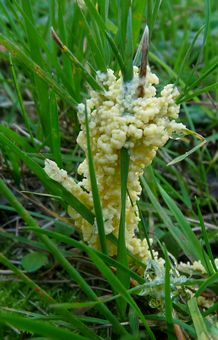 Amethyst DeceiverToday's trip got off to an unusual start when one of our number got left behind when the minibus departed from the Italian Centre! Having retrieved the stray, 14 people arrived in good spirits at Anglers Country Park, Wintersett, which is 4 miles south of Wakefield. The Park is a former opencast mine which was reclaimed 25 years ago and forms part of a larger area of interest joined by the 10 mile Waterton Trail, named after Charles Waterton, creator of the world's first nature reserve at nearby Walton Hall almost 200 years ago.
Amethyst DeceiverToday's trip got off to an unusual start when one of our number got left behind when the minibus departed from the Italian Centre! Having retrieved the stray, 14 people arrived in good spirits at Anglers Country Park, Wintersett, which is 4 miles south of Wakefield. The Park is a former opencast mine which was reclaimed 25 years ago and forms part of a larger area of interest joined by the 10 mile Waterton Trail, named after Charles Waterton, creator of the world's first nature reserve at nearby Walton Hall almost 200 years ago.
We spent the morning walking round the lake at Anglers and through the woodland walk where we enjoyed the autumn colours and saw many interesting species of fungi including the unusual verdigris toadstool and lots of fairies' bonnets. By the time we reached the main bird hide the sun was breaking through and we watched lapwings wheeling and wigeon, pochard, great crested grebe, gadwall and tufted ducks swimming. Robert's scope gave us good close-up views of these birds together with a linnet having a late morning bath. We saw some nice examples of fungi near the Pol hide together with a broad-leaved heleborine in fruit.
 Flowers of Tan (A slime mould, also known as the "Dog Vomit Slime Mould"!)After an alfresco lunch (the cafe was closed for renovation) we split into two groups, one to investigate the delights of Haw Park Wood, the other to see what birds we could see on the other two nearby reservoirs, Wintersett and Cold Hiendley, built 150 years ago to supply the Barnsley Canal which ran nearby. The wood party added quite a number of different species to the fungi list (two illustrated here and many more, beautifully photographed by Sue, in the gallery, and all expertly identified by Joan) and the birders managed to find a female scaup (with the aid of a more knowledgeable local birder) and seven common scoters. The ferruginous duck and the cetti's warblers that had been in residence for the previous few days eluded us.
Flowers of Tan (A slime mould, also known as the "Dog Vomit Slime Mould"!)After an alfresco lunch (the cafe was closed for renovation) we split into two groups, one to investigate the delights of Haw Park Wood, the other to see what birds we could see on the other two nearby reservoirs, Wintersett and Cold Hiendley, built 150 years ago to supply the Barnsley Canal which ran nearby. The wood party added quite a number of different species to the fungi list (two illustrated here and many more, beautifully photographed by Sue, in the gallery, and all expertly identified by Joan) and the birders managed to find a female scaup (with the aid of a more knowledgeable local birder) and seven common scoters. The ferruginous duck and the cetti's warblers that had been in residence for the previous few days eluded us.
The weather stayed sunny for the rest of our stay and we were able to record 35 bird species and a speckled wood butterfly which together with a few dragonflies was enjoying a late fly round in the afternoon sun.
Another pleasant BEES day out.
Stuart
